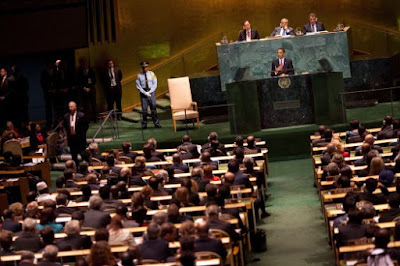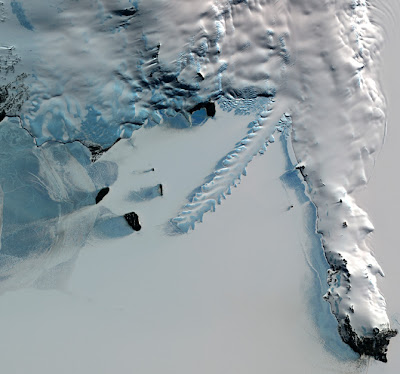The nation's economy suffered home foreclosure rates "jumped 16 percent to 2.9 percent of serviced mortgages;" results from the 2nd quarter of 2009 the Office of the Comptroller of the Currency (OCC) and the Office of Thrift Supervision (OTS) publicized in newly released figures from the Office of the Comptroller of the Currency and the Office of Thrift Supervision.
The Washington Post reported that: "Completed foreclosures reached 106,007 during the second quarter, compared with 90,696 during the first three months of the year, according to the report by the Office of Thrift Supervision and the Office of the Comptroller of the Currency, which regulates banks. Their quarterly report examines 64 percent of outstanding mortgages in the country.
"The increase was primarily the result of various government and industry foreclosure moratoriums," The Washington Post explained that the report said.
“The mortgage data reported for the second quarter of 2009 continued to reflect negative trends influenced by weakness in economic conditions, including high unemployment and declining home prices in weak housing markets,” the federal report explained.
Reuters explained that: "The report covers mortgages serviced by most of the industry’s largest mortgage servicers, whose loans make up about 64 percent of all mortgages outstanding in the United States.
"The regulators said there was a lull in newly initiated foreclosures during the second quarter as mortgage servicers worked to implement the federal “Making Home Affordable” program.
"The $50 billion program, launched in March, is designed to stabilize the housing market by helping up to 9 million Americans reduce their monthly mortgage payments to more affordable levels.
"The OCC and OTS said the emphasis on the program contributed to a dramatic shift in the composition of home retention actions toward lowering payments. Previously, the vast majority of loan modifications either did not change or increased monthly payments."
It is no secret that the Obama economic team has been fighting a difficult battle to right a situation that originated because of lax involvement of the Bush administration to address the housing credit situation that arose during Bush's presidential terms. [E]xperts, from both political parties, say Mr. Bush’s early personnel choices and overarching antipathy toward regulation created a climate, that, if it did not set off the turmoil, almost certainly aggravated it." Many of the same "experts say the administration could have done even more to curb excesses in the housing market."
"Today, even some sympathetic to Mr. Bush say he cannot disentangle himself from a home-lending industry that ran amok or a banking industry that mortgaged its future on toxic loans.
“The crisis definitely happened on their watch,” said Kenneth S. Rogoff, a professor of economics at Harvard... This is eight years into the Bush administration. There was a lot of time to deal with it.” Some of the primary effects of the home foreclosure crisis has been an overall erosion of consumer wealth, the stability of bank balance sheets, plummeting home prices, and a deterioration of consumer confidence."
“The crisis definitely happened on their watch,” said Kenneth S. Rogoff, a professor of economics at Harvard... This is eight years into the Bush administration. There was a lot of time to deal with it.” Some of the primary effects of the home foreclosure crisis has been an overall erosion of consumer wealth, the stability of bank balance sheets, plummeting home prices, and a deterioration of consumer confidence."
The Obama administration has made keeping families in their homes and the Making Home Affordable plan has been a centerpiece of their efforts to stabilize the housing sector of the economy. "Under that plan, lenders are paid to lower a borrower's monthly payments. Government data has shown that since the program was launched in March, nearly 400,000 borrowers have been helped. The Obama administration aims to complete 500,000 loan modifications by November.
"But even as that program ramps up, rising unemployment continues to hamper foreclosure prevention efforts. The level of foreclosure actions started during the quarter stayed steady, while the number of seriously delinquent borrowers -- those who had missed at least two payments -- increased 10 percent, according to the report.
"The mortgage data "continued to reflect negative trends influenced by weakness in economic conditions including high unemployment and declining home prices in weak housing markets," the report said.
"But even as that program ramps up, rising unemployment continues to hamper foreclosure prevention efforts. The level of foreclosure actions started during the quarter stayed steady, while the number of seriously delinquent borrowers -- those who had missed at least two payments -- increased 10 percent, according to the report.
"The mortgage data "continued to reflect negative trends influenced by weakness in economic conditions including high unemployment and declining home prices in weak housing markets," the report said.
"The report also reflected the risks still posed by hundreds of thousands of risky home loans known as option adjustable-rate mortgages, which reset to significantly higher payments. With these "option ARMs," also known as pick-a-pay loans, a borrower chooses how much to pay each month, often less than the interest due. But the payments on these mortgages eventually rise significantly, putting the borrower at risk of losing the home.
"The report also reflected the risks still posed by hundreds of thousands of risky home loans known as option adjustable-rate mortgages, which reset to significantly higher payments. With these "option ARMs," also known as pick-a-pay loans, a borrower chooses how much to pay each month, often less than the interest due. But the payments on these mortgages eventually rise significantly, putting the borrower at risk of losing the home.
"More than 15 percent of these types of loans were seriously delinquent during the second quarter, compared with 5.3 percent of all mortgages, according to the report, and 10 percent were in the process of foreclosure. "The risks of these loans and geographic concentration caused them to perform significantly worse than the overall portfolio," the report said.More than 15 percent of these types of loans were seriously delinquent during the second quarter, compared with 5.3 percent of all mortgages, according to the report, and 10 percent were in the process of foreclosure. "The risks of these loans and geographic concentration caused them to perform significantly worse than the overall portfolio," the report said.
"The report also reflected the risks still posed by hundreds of thousands of risky home loans known as option adjustable-rate mortgages, which reset to significantly higher payments. With these "option ARMs," also known as pick-a-pay loans, a borrower chooses how much to pay each month, often less than the interest due. But the payments on these mortgages eventually rise significantly, putting the borrower at risk of losing the home.
"More than 15 percent of these types of loans were seriously delinquent during the second quarter, compared with 5.3 percent of all mortgages, according to the report, and 10 percent were in the process of foreclosure. "The risks of these loans and geographic concentration caused them to perform significantly worse than the overall portfolio," the report said.More than 15 percent of these types of loans were seriously delinquent during the second quarter, compared with 5.3 percent of all mortgages, according to the report, and 10 percent were in the process of foreclosure. "The risks of these loans and geographic concentration caused them to perform significantly worse than the overall portfolio," the report said.































